Table of Contents
In a sky dominated by stealth and speed, India can no longer afford to chase shadows—it must become the shadow.
Pratik Kondawale Tweet
Introduction: The Sky is No Longer the Limit
The battle for air superiority in the 21st century is no longer just about speed or firepower, it’s about stealth, intelligence, and survivability. In this new era of warfare, 5th Generation Fighter Jets are the crown jewels of any air force, capable of dominating both physical and electronic warfare domains.
For India, joining this elite league is not just a technological ambition, it’s a geostrategic necessity. With adversaries like China and Pakistan ramping up their aerial capabilities, India’s push to develop its own stealth fighter — the Advanced Medium Combat Aircraft (AMCA) — marks a pivotal step in securing its skies and its future.
And now, with reports confirming India’s recommendation of French engine manufacturer Safran for a ₹61,000 crore jet engine deal, the journey to 5th generation readiness is finally finding thrust.
Understanding 1st to 5th Generation Fighter Jet
The term “generation” in fighter jets refers to the evolution of technology, capabilities, and combat doctrine. Here’s how fighters have advanced through the decades:
| Generation | Key Features | Notable Aircraft Examples |
|---|---|---|
| 1st Generation (1940s–1950s) | Subsonic speed, straight wings, manual/analog controls, no onboard radar | MiG-15, F-86 Sabre |
| 2nd Generation (1950s–1960s) | Supersonic capability, early radar systems, infrared-guided missiles | MiG-21, F-104 Starfighter |
| 3rd Generation (1960s–1970s) | Multirole roles emerge, improved avionics, better weapons and maneuverability | Mirage III, F-4 Phantom |
| 4th Generation (1970s–1990s) | Fly-by-wire controls, BVR (Beyond Visual Range) missiles, enhanced agility | Su-30MKI, F-16 Fighting Falcon, Dassault Rafale |
| 5th Generation (2000s–Present) | Stealth technology, internal weapons bay, sensor fusion, AI-driven combat systems | F-22 Raptor, F-35 Lightning II, Chengdu J-20 (China) |
🇮🇳 Current Status: Where We Stand
India’s 5th generation fighter jet program, the Advanced Medium Combat Aircraft (AMCA), is currently in the development phase with the goal of bolstering the Indian Air Force’s (IAF) capabilities and achieving self-reliance in defense technology.
Approved by the Cabinet Committee on Security (CCS) in March 2024, the AMCA program entered its execution phase in May 2025, with Defence Minister Rajnath Singh giving the go‑ahead for project implementation led by the Aeronautical Development Agency (ADA) in collaboration with DRDO, Hindustan Aeronautics Limited (HAL), and partner companies.
Technical Roadmap & Timeline
(According to reports by The Hindu, Reuters, Defense News India, Business standard, The Economic Times, Wikipedia)
The design phase wrapped up in 2023, followed by CCS approval in March 2024.
Five prototypes are planned: first flight anticipated in late 2028, with further prototypes spaced 8–9 months apart for flight and weapons trials
Mass production is expected to begin by 2034, with induction into IAF service by 2035—the first two squadrons using licensed GE F414 engines (98 kN), and subsequent ones powered by a 110–120 kN indigenous engine co-developed with Safran
- Approximately 126 aircraft (7 squadrons) are planned, with two squadrons deploying the GE‑powered Mk‑1 and five with Mk‑2 indigenous engines
These jets are designed not just to fight, but to think, evade, and dominate across air, space, and cyberspace.
India’s AMCA: Breaking the Supersonic Ceiling
Project Details:
The Advanced Medium Combat Aircraft (AMCA) is being developed by the Aeronautical Development Agency (ADA) in collaboration with Hindustan Aeronautics Limited (HAL). The first prototype is expected to take flight by 2028, with full-scale induction into the Indian Air Force projected in the early 2030s. The project will roll out in two phases—**AMCA Mk‑1**, which will be powered by a foreign engine (most likely from Safran), and **AMCA Mk‑2**, which will feature an advanced indigenous engine currently under joint development.
Major Development: India Inked with Safran (France) for ₹61,000 Crore Engine Deal: AMCA
As per a recent report, India has officially recommended French engine giant Safran for a mega ₹61,000 crore joint development program to power the AMCA. This marks a crucial leap in India’s journey to become self-reliant in military aviation.
- Safran has prior experience with Rafale’s M88 engines.
- The new engine will be co-developed in India, transferring critical know-how.
- It could power not just AMCA, but also future UCAVs and drones.
- Ends India’s long-standing dependence on Russia for propulsion technology.
Key Challenges India Faces for 5th generation fighter jet
India’s pursuit of a 5th generation fighter jet faces several key challenges, primarily centered around technology development, funding, and export potential. These not only include developing indigenous engine technology, managing intellectual property rights, securing consistent funding, and building a robust aerospace workforce but also the following:
- Jet Engine Technology Gap: Developing a reliable, high-thrust, combat-grade engine is the toughest part of building a 5th gen jet. India’s Kaveri engine failed in the past — hence the Safran deal becomes vital.
- Stealth Design Expertise: Designing radar-absorbing airframes, internal weapon bays, and reducing heat signatures requires next-gen materials science and simulation capability.
- Sensor Fusion & AI Avionics: Integrating data from radar, EW systems, satellites, and pilot commands into a seamless AI-based interface is a technical nightmare if you don’t have deep experience.
- Bureaucratic Red Tape: India’s defense procurement has often suffered from delays, lack of coordination between DRDO, HAL, and Services. Streamlining this will be critical.
- Massive Costs: Developing and producing 5th-gen jets can easily cost upwards of ₹1.5 lakh crore over two decades. It requires political will and steady funding.
Also read about – “No” Third Aircraft Carrier: What It Means for the Future Indian Navy
Importance for 5th Generation fighter jet
5th Generation fighter jets are crucial for modern air forces due to their advanced stealth, sensor fusion, and networked capabilities, providing a significant advantage in air superiority and overall combat effectiveness. These aircraft enhance situational awareness, enable network-centric warfare, and bolster deterrence capabilities.
- Regional Power Balance: Counters China’s J-20 and Pakistan’s J-10CE purchases
- Make in India Boost: Helps defense exports and industrial ecosystem
- Aerospace Self-Reliance: From aircraft to engines to electronics — a full leap
- Defense Diplomacy: Gives India leverage in partnerships like IAF-France, IAF-US exercises
Why 5th Generation fighter jet Is Not a Luxury, But a Strategic Necessity for India
For India, a 5th generation fighter jet, like the HAL AMCA, is not a luxury but a strategic necessity due to the evolving regional security landscape and the need to maintain air superiority against potential adversaries. This capability is crucial for deterring aggression, protecting national interests, and ensuring technological parity with other major powers including:
China’s J-20: is Already Deployed Near LAC India’s adversary has stealth fighters that could challenge our Rafales and Su-30s. We must match them.
Pakistan’s Next Move: Pakistan is exploring options like J-31 (China) or TF-X (Turkey). If acquired, India’s aerial edge could shrink.
Air Dominance: is Key in Future Wars Whether it’s a conflict with China or a rapid intervention in the Indian Ocean, 5th gen jets will decide who rules the skies.
Export Power: An indigenous AMCA with a Safran engine could become an export success, bringing in billions and strengthening India’s global defense ties.
Way Ahead: Strategic Recommendations
To fast-track the AMCA project, India should speed up development by cutting bureaucratic delays through strong oversight and using faster, flexible design methods.
For the Mk‑1 version, the government should finalize licensed production of the GE F414 engine by the end of 2025, and for Mk‑2, it should establish joint development agreements with companies like Safran (France) or Rolls-Royce (UK), while keeping the technology rights within India.
At the same time, building a strong ecosystem under the Make-in-India initiative is crucial this includes setting up advanced manufacturing units for stealth materials, avionics, and monitoring systems. Collaborations with IITs, start-ups, and aerospace companies should also be encouraged to boost innovation in areas like AI-based sensor fusion and electronic warfare.
While AMCA is being developed, India should strengthen its current air power by adding more Tejas Mk‑2 jets, upgrading Rafales and Su-30MKIs, and deploying unmanned combat drones like HAL CATS Warrior for extra support in future missions.
FAQs
What defines a 5th generation fighter jet?
ANS: Stealth design, sensor fusion, AI avionics, internal weapon bays, and ability to operate in a networked battlefield.
When will India’s AMCA be ready?
ANS: First flight is expected by 2028; full induction into IAF is likely by the early 2030s.
Why did India choose Safran for engine development?
ANS: Safran has a track record (M88 engine for Rafale), is willing to co-develop in India, and offers technology transfer — something the U.S. has been hesitant to do.
Will AMCA be exported?
ANS: Yes, after induction, India aims to export it to friendly nations like Egypt, Vietnam, and the Middle East, offering a low-cost stealth option.
How is AMCA different from Tejas?
ANS: Tejas is a 4th gen light fighter. AMCA is a twin-engine, heavy stealth fighter with advanced avionics and stealth capabilities.
The AMCA program represents a transformative leap for Indian aerospace—transforming defense manufacturing from import‑reliance to indigenous innovation. While timelines are ambitious, the combination of private–public collaboration, global technology partnerships, and focused ecosystem building can help India realize its strategic and technological vision by mid‑2030s.
Conclusion: A Jet-Fueled Dream, Now with Thrust
India’s quest for a 5th generation fighter is no longer just a dream — it’s a near-term reality backed by technology, intent, and international collaboration. With the Safran engine deal likely finalized and design work on AMCA well underway, India is sending a strong message: it’s ready to command not just the battlefield, but the aerospace stage.
The AMCA will not only be a jet — it will be a symbol of India’s sovereign strength, innovation, and strategic foresight.
Also read about the China`s Mosquito sized spy drone, what it means for the Indian security
China`s Mosquito Spy Drone: What It Means for India’s Security

Pratik Kondawale
Strategist | Indian Defence & Global Affairs
Founder of GeoLens.in, Pratik writes in-depth analysis on India’s defence strategy, military tech, and global power shifts delivering sharp insights through an Indian lens.
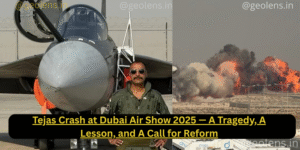
Tejas Crash at Dubai Air Show 2025 — A Tragedy, A Lesson, and A Call for Reform
The Tejas crash at the Dubai Air Show turned a moment of national pride into sudden heartbreak when Wing Commander Syal lost his life. This article unpacks the events of that day, explains why the Tejas crash matters for India’s defense readiness, and outlines the practical lessons and reforms needed to ensure the program recovers stronger. It also honors the pilot’s sacrifice and shows how the Tejas crash can become a catalyst for accountability, safer engineering, and faster delivery of operational jets.

Bangladesh EX-PM Sheikh Hasina Death Sentenced: Turmoil in Bangladesh and Rewired South Asian Politics
The Sheikh Hasina death sentenced verdict has detonated one of the most explosive political crises in Bangladesh’s modern history. Delivered in absentia by the International Crimes Tribunal, the ruling blames the former prime minister for orchestrating widespread state violence during the 2024 student protests. The decision has dismantled the Awami League’s long-standing dominance, pushed Bangladesh into a volatile power vacuum, and placed India in the middle of a diplomatic standoff. As questions about justice, political motivation, and regional stability collide, the fallout of this verdict is reshaping South Asian geopolitics in real time.
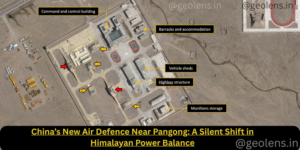
China with New Air Defence Near Pangong: A Silent Shift in Himalayan Power Balance
China’s new air defence near Pangong marks a major strategic escalation in the Himalayas. Satellite imagery reveals advanced HQ-9 missile systems, radar units, and fortified shelters aimed at asserting Chinese air dominance over eastern Ladakh. This development not only alters the regional military balance but also raises critical questions about India’s preparedness, response strategy, and the long-term implications for border security and geopolitical stability in South Asia.
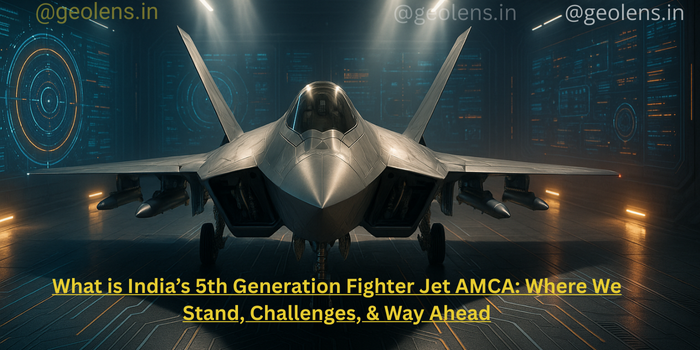
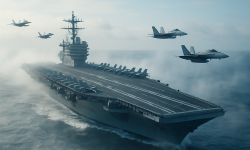
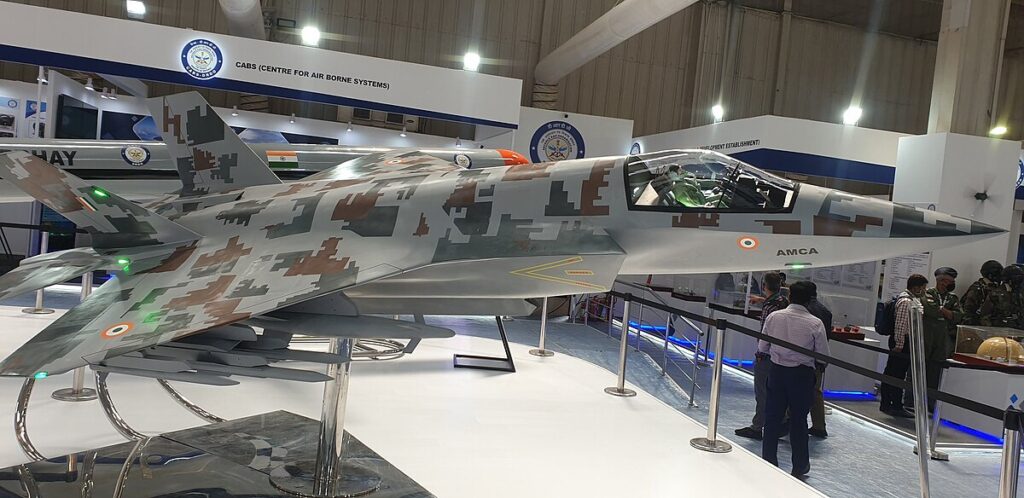
3 thoughts on “What is India’s 5th Generation Fighter Jet AMCA: Where We Stand, Challenges, & Way Ahead”